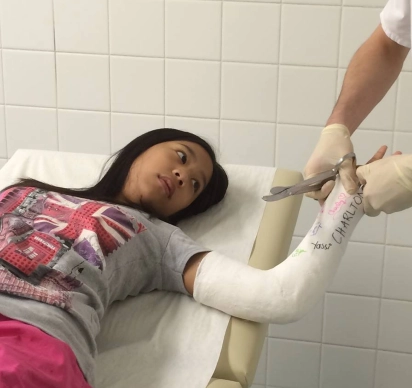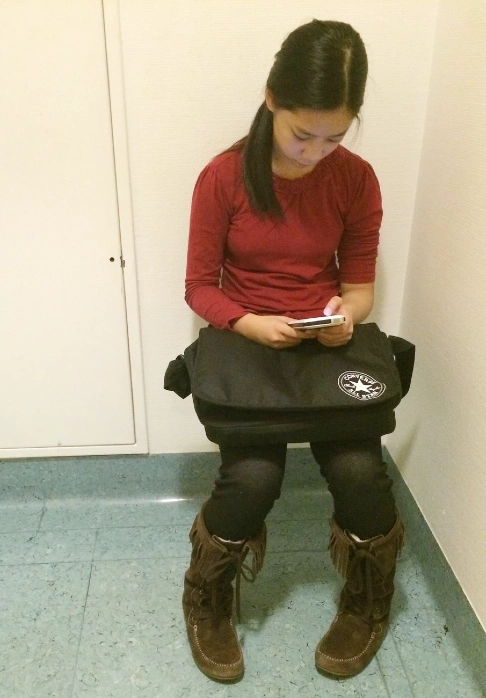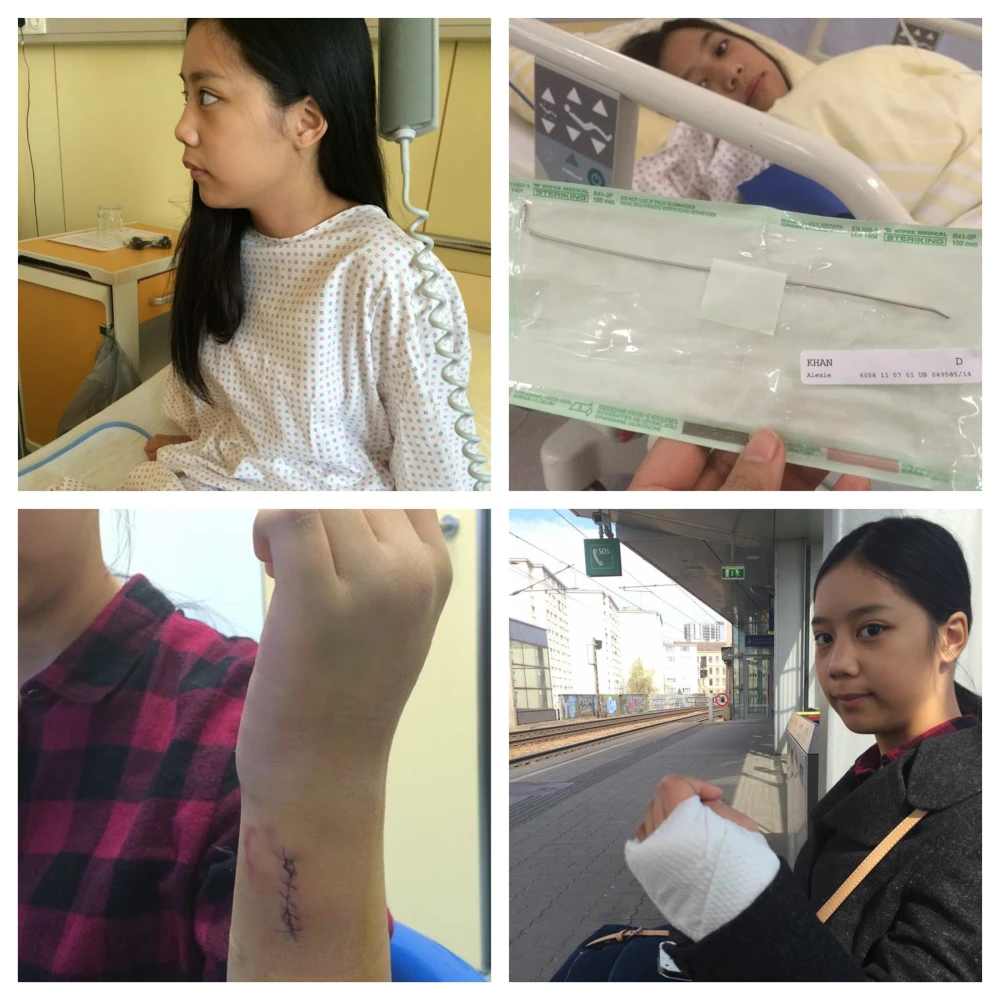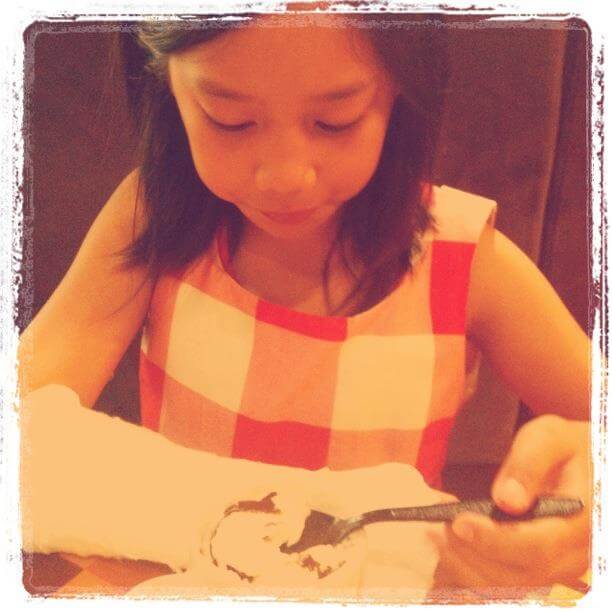
Kids Accident – Broken Arm : With cast and supporter (Sept 29, 2014)
It is quite scary when you break your arm or experience any other accident, but when your son or daughter breaks an arm or wrist, it is a lot more terrifying. It’s important to respond quickly and appropriately to ensure your child’s safety and well-being.
Here are some steps to take if your child broke their arm:
- Stay Calm: It’s essential to remain calm and composed to assess the situation effectively and provide appropriate assistance.
- Assess the Injury: Carefully examine the child’s arm to check for any obvious signs of a broken bone, such as swelling, deformity, bruising, or difficulty moving the arm.
- Immobilize the Arm: If you suspect a fracture, do not try to realign the bone or move the arm. Instead, immobilize the arm in the position you find it using a splint or a sling. You can create a makeshift sling using a piece of cloth or a scarf.
- Support the Arm: Cradle the injured arm gently with the other hand to provide additional support and minimize movement.
- Seek Medical Attention: It’s crucial to seek immediate medical attention for a broken arm. Call emergency services or take the child to the nearest hospital emergency room for professional evaluation and treatment.
- Elevate the Arm: If possible, raise the injured arm above heart level to help reduce swelling.
- Apply Ice: Place a cold pack or ice wrapped in a cloth on the injured area for about 15-20 minutes, but ensure there is a barrier (like a cloth) between the ice and the skin to avoid frostbite.
- Stay with the Child: Comfort the child and stay with them until medical help arrives. Reassure them and keep them as calm as possible.
- Avoid Giving Pain Medication: Do not give the child any pain medication unless advised to do so by a medical professional.
- Follow Medical Instructions: After receiving medical attention, follow the doctor’s instructions carefully for the child’s recovery. This may include using a cast, undergoing further tests (like X-rays), or attending follow-up appointments.
Remember, it’s crucial not to try to set the bone or manipulate the arm yourself, as this could cause further damage. Always seek immediate medical attention to ensure the child receives appropriate care for their injury.

Kids Accident – Broken Arm : Healed (November 2014)
What if the accident happens away from home? I received a call from my daughter’s homeschool teacher, informing me that she has had an accident during Physical Education class. I hurriedly went to the school (two bus stations away, and about 10 minutes walk from our home).
If you receive a call from your child’s school informing you that your child has broken an arm, it can be concerning, but it’s essential to stay calm and take the necessary steps to ensure your child’s well-being.
Here’s what you should do if an accident happens in school or away from home:
- Confirm the Details: Ask the school staff for specific details about the incident, such as the severity of the break, any immediate treatment provided, and whether they have already sought medical attention.
- Seek Medical Attention: If your child has not yet received medical attention, prioritize this step. Depending on the severity of the injury and the school’s policies, they may have already called for an ambulance or asked you to come and take your child to a hospital. Follow their guidance or call emergency services to get immediate medical help.
- Inform the School: Let the school know that you are on your way to seek medical attention for your child. They may need additional information from you, such as your contact details or authorization for any medical procedures.
- Remain Calm and Reassuring: Children can be frightened and in pain after an injury. When you arrive at the school or hospital, stay calm, and reassure your child that they are in good hands and will receive the care they need.
- Follow Medical Instructions: Once your child receives medical treatment, follow the doctor’s instructions carefully. They may need to wear a cast, undergo further tests, or attend follow-up appointments. Make sure to understand and comply with all medical advice for your child’s recovery.
- Inform Other Relevant Parties: If necessary, inform other caregivers or family members about the situation so that they are aware and can provide support.
- Prepare for Recovery: Depending on the severity of the break, your child may need some extra care and assistance during the recovery period. Make necessary adjustments at home to ensure their comfort and safety. Discuss any potential limitations or restrictions with the doctor.
- Communicate with the School: Stay in touch with the school and keep them updated about your child’s progress and any special arrangements needed for their return to school.
Remember, a broken arm is a common childhood injury, and with timely and proper medical attention, most children recover well. Focus on supporting your child during their recovery and helping them through any challenges they may face during this time.

Kids Accident – Broken Arm : Cast removed (November 2014)
Healing from a broken arm can indeed take some time, and during this period, both the child and the parents or caregivers will need patience. The recovery process may vary depending on the severity of the break and the child’s overall health, but it typically takes several weeks for the bone to mend and regain its strength.
Here are a few points to consider during the healing process:
- Patience with Recovery: It’s essential to be patient with the healing process. Avoid rushing the child back into regular activities before the doctor gives clearance. Rushing can lead to reinjury or delay the healing process.
- Follow Medical Advice: The doctor will provide specific instructions for the recovery period. Follow these guidelines carefully, including any recommended exercises, physical therapy, or restrictions on activities.
- Emotional Support: A broken arm can be frustrating for a child, especially if they were previously active and independent. Offer emotional support and understanding during this time. Encourage them to express their feelings and offer reassurance that healing takes time.
- Keep a Positive Attitude: Maintaining a positive attitude can help the child cope with the challenges of healing. Focus on the progress being made and celebrate the small milestones along the way.
- Engage in Alternative Activities: While the child may not be able to participate in their usual physical activities, look for alternative activities that they can enjoy during the recovery period. This can help keep their spirits up and maintain a sense of normalcy.
- Encourage Independence: As the child heals and gains more mobility, encourage them to do as much as they can independently. Gradual independence can boost their confidence and reduce frustration.
- Communicate with School: If the child is of school-going age, communicate with their teachers and school staff about any necessary accommodations during the healing period. This might include changes in physical education or classroom activities.
- Regular Follow-Up: Attend all scheduled follow-up appointments with the doctor to monitor the healing progress and make any necessary adjustments to the treatment plan.

Kids Accident – Broken Arm : follow up check (March 2015)
Remember that each child’s healing journey is unique, and it’s important to be patient and supportive throughout the process. By providing the necessary care and encouragement, you can help your child navigate through this challenging time and eventually make a full recovery.
—
My daughter took more than 8 months to recover. She had the accident in September having a nasty metal piece placed (under anesthesia) by the bones to get them straight while healing.
She had her armed cemented until the end of November (2014). Finally, in April (2015) she underwent surgery again to have the metal removed. They had the wound where the metal was taken out stitched and wrapped in bandage for some time until it healed.

April 2015


